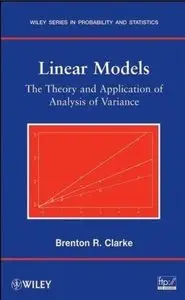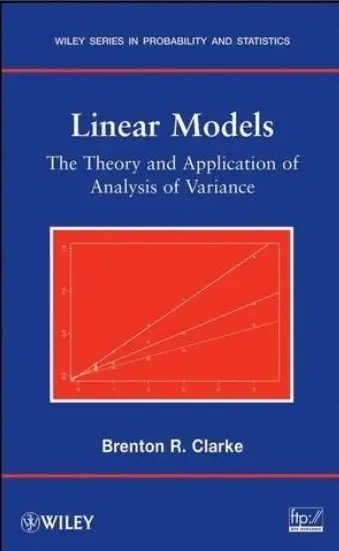Brenton R. Clarke - Linear Models: The Theory and Application of Analysis of Variance
Published: 2008-08-04 | ISBN: 0470025662 | PDF | 272 pages | 8 MB
An insightful approach to the analysis of variance in the study of linear models
Linear Models explores the theory of linear models and the dynamic relationships that these models have with Analysis of Variance (ANOVA), experimental design, and random and mixed-model effects. This one-of-a-kind book emphasizes an approach that clearly explains the distribution theory of linear models and experimental design starting from basic mathematical concepts in linear algebra.
The author begins with a presentation of the classic fixed-effects linear model and goes on to illustrate eight common linear models, along with the value of their use in statistics. From this foundation, subsequent chapters introduce concepts pertaining to the linear model, starting with vector space theory and the theory of least-squares estimation. An outline of the Helmert matrix is also presented, along with a thorough explanation of how the ANOVA is created in both typical two-way and higher layout designs, ultimately revealing the distribution theory. Other important topics covered include:
Vector space theory
The theory of least squares estimation
Gauss-Markov theorem
Kronecker products
Diagnostic and robust methods for linear models
Likelihood approaches to estimation
A discussion of Bayesian theory is also included for purposes of comparison and contrast, and numerous illustrative exercises assist the reader with uncovering the nature of the models, using both classic and new data sets. Requiring only a working knowledge of basic probability and statistical inference, Linear Models is a valuable book for courses on linear models at the upper-undergraduate and graduate levels. It is also an excellent reference for practitioners who use linear models to conduct research in the fields of econometrics, psychology, sociology, biology, and agriculture.



